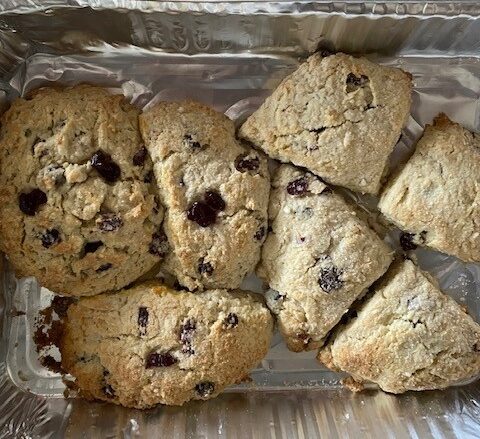All dairy in the original recipe was completely omitted from the recipe. The butter in the crust was replaced by crisco vegetable shortening and the buttermilk in the chocolate cupcakes was cut as well, as was the baking soda. This is due to the combined leavening properties of the buttermilk and baking soda, which was replaced by baking powder. I had predicted that the substitution of crisco for butter in the crust would not do much, simply alter the taste and bake time of the crust. There would be a more pronounced change in the substitution of baking soda and buttermilk with baking powder. The creaminess of the cake would be affected, as would the thickness of the batter. I predicted that the cake might be slightly crumbly, as the added fat from the buttermilk would not be present.
The actual results of these substitutions were similar, but slightly different than predicted. For example, the taste of the crust was altered, but so was the composition. The crust crumbled and fell apart when removing the cupcakes from their liners. This was most likely due to the missing water molecules present in the butter, which would help the crust stay together and bond together. This is because of the sugar within the graham cracker/sugar mixture dissolving in the water, which would pack the molecules tightly, causing the crust to be strongly bonded. There were, as predicted, more consequences in using baking powder instead of buttermilk and baking soda. The texture and thickness of the batter were indeed affected, (the batter without buttermilk resembled brownie batter instead of cake batter) but the lack of buttermilk did not seem to affect the amount that the cake stayed together. It did not appear all that crumbly, yet still a bit dry. An unexpected consequence was the sinking of the cake, although that may have something to do with the unaltered baking temperature or the incorrect measurement substitution (replaced 1 tsp baking soda and 1/2 cup buttermilk with 2 tsp baking powder). I had asked my brother to test both batches, and I did as well. We noted that the altered version’s crust was noticeably more crumbly and tasted slightly sweeter. The altered chocolate cupcake was more chewy, less sweet (though still very rich), less moist and sunk in the middle.
*Picture by Ava Nicholson
References:
“A Guide to Different Types of Fats.” Compound Interest, 2015.
Potter, Jeff. “Time and Temperature, Air and Water.” Cooking for Geeks: Real Science, Great Cooks, and Good Food, O’Reilly, Beijing, 2016, pp. 148–276.
Provost, Joseph J., et al. “Milk and Ice Cream.” The Science of Cooking, Wiley Blackwell, Chichester, West Sussex, 2016, pp. 115–117.
Quellen, Simon Field. “Oils and Fats.” Culinary Reactions: The Everyday Chemistry of Cooking, Chicago Review Press, Chicago, IL, 2012, pp. 14–93.
Seward, Elaine. How Does Double Acting Baking Powder… Doubly Act?, 2019, https://youtu.be/f16wezzHPzg. Accessed 2022.
Vega César, et al. “Why Does Cold Milk Foam Better?” The Kitchen as Laboratory: Reflections on the Science of Food and Cooking, Columbia University Press, New York, 2013, pp. 117–122.

